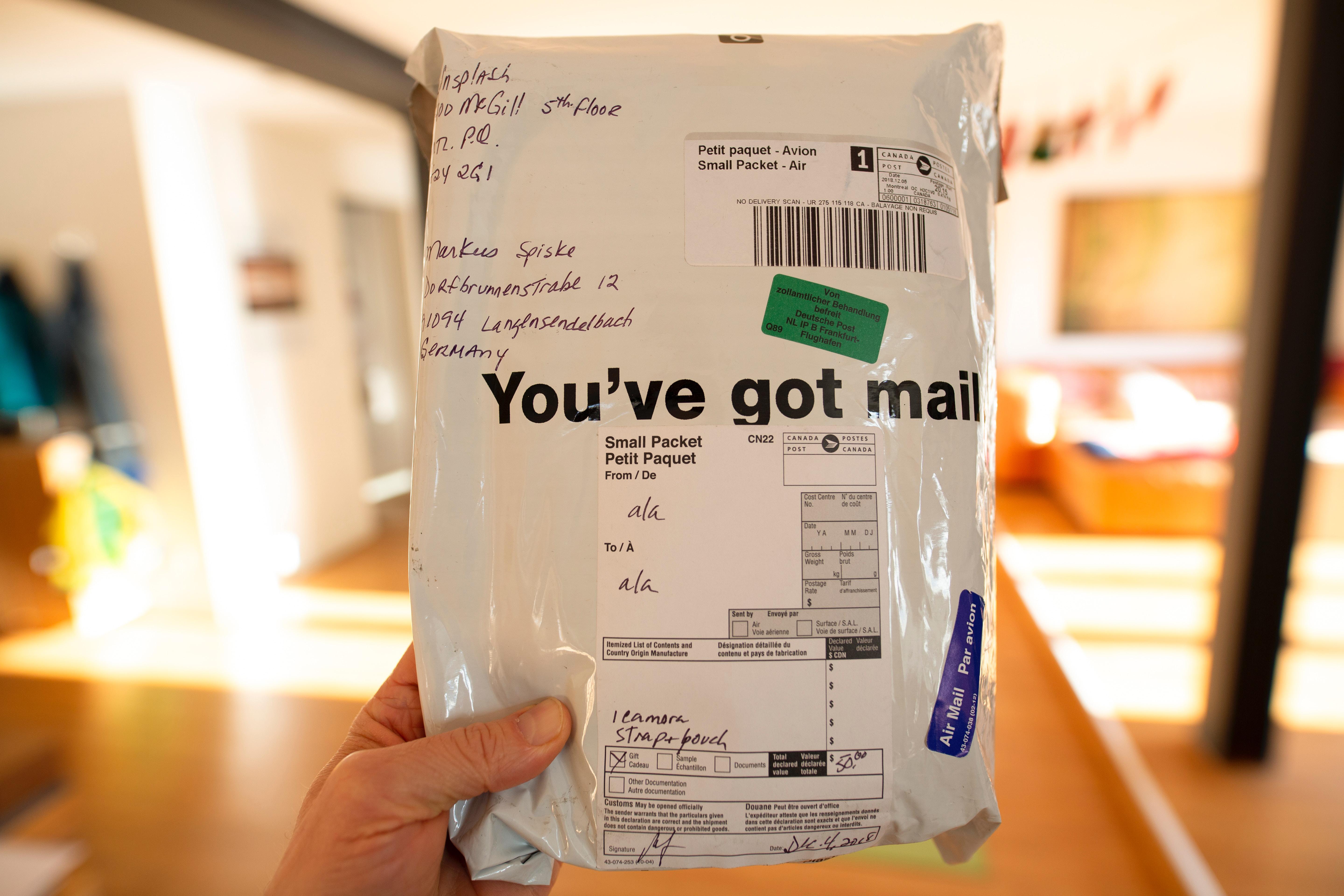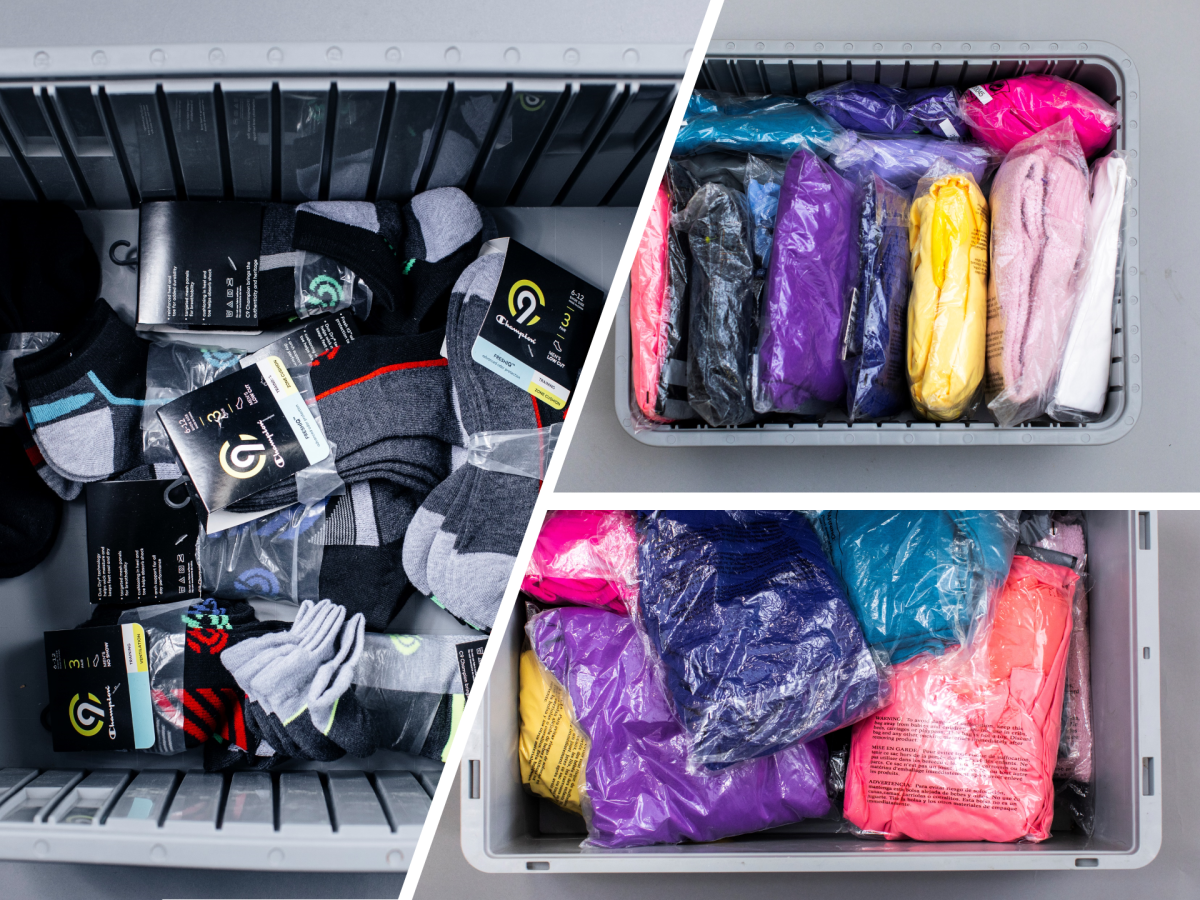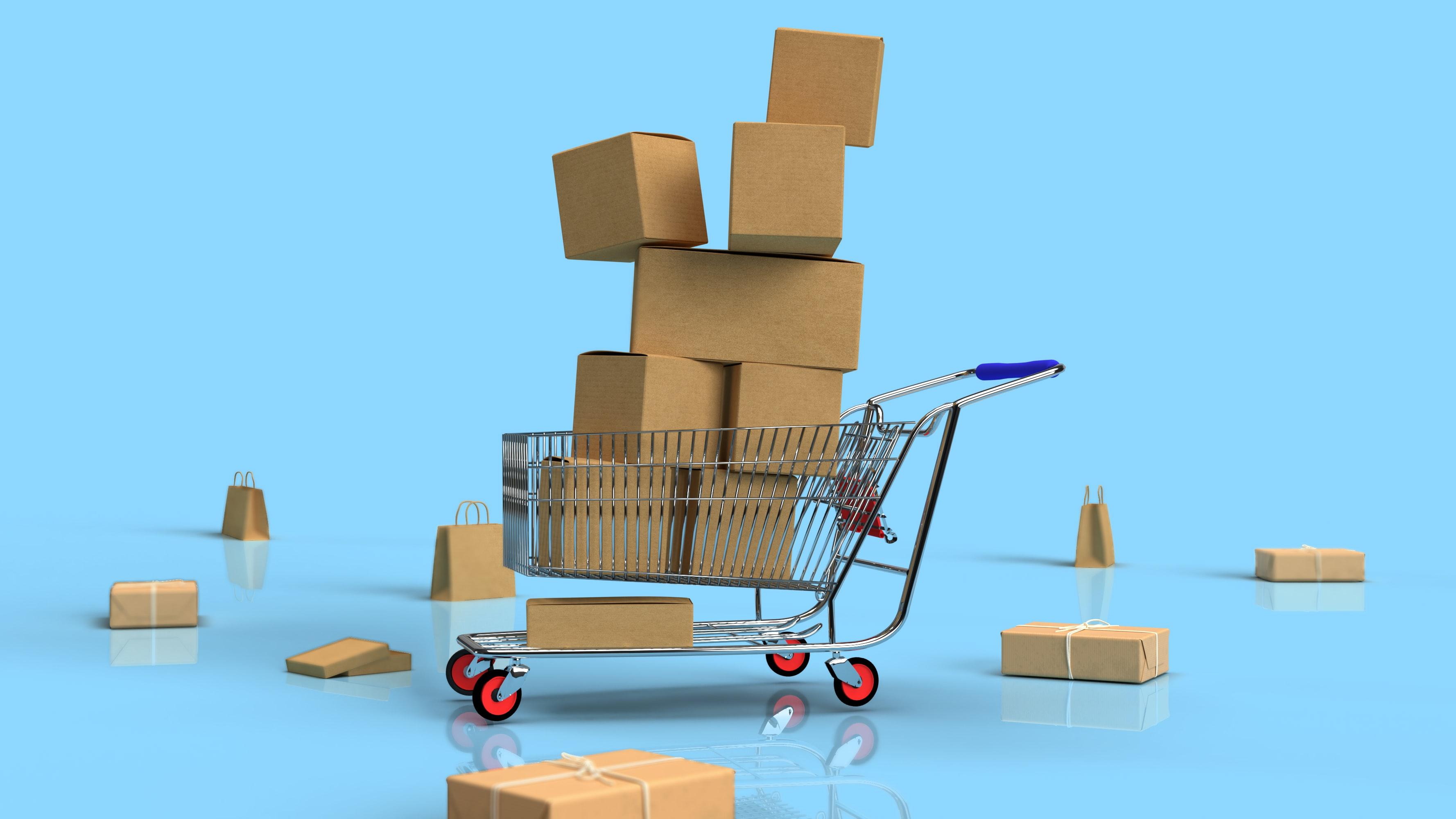On September 23rd, 1962 the Jetsons premiered, and along with it, Rosie the Robot. She spoke in a Brooklyn accent, wore a frilly apron, and completed household tasks with ease. So much of what science fiction authors and writers imagined in the mid to late twentieth century has since come true. So why don’t we have robots that can fold laundry in our homes? The answer is: folding laundry is hard for a robot! To complete the task, a robot has to understand the shape, size, and orientation of the item it’s folding. The moment the robot picks up the item, it deforms. Plus, there is a variety of dynamic and complex shapes or shadows involved. Bottom line, manipulating and folding requires not only a high level of precision and dexterity but also a comprehensive understanding of the scene in which the piece of apparel exists. Check out this interesting video of a robot folding towels to get an understanding of the complexity.
These challenges are quite similar to those associated with picking apparel using robots in warehouses and fulfillment centers. In this article, we’ll explore some of these unique challenges, with an eye towards solving them the only way it’s truly possible to do so: with modern artificial intelligence.
Why are those shirts so hard to pick?
After all, they’re just shirts. Let’s take a look at some of the inherent characteristics of apparel that can make robotic picking challenging.
Variety of shapes and sizes
It’s one thing to unload tote after tote of cereal boxes that share dimensions and shapes. With apparel, you never know what you’re going to get. Big, small, thin, thick, heavy, light, wide, narrow: apparel is a study of opposites. Traditional robotic automation is driven by explicitly preprogramming the robot on how to pick every single variation of every single apparel SKU. For apparel, this would mean hardcoding billions of these permutations using neverending IF-THEN statements or a massive spreadsheet!
Transparent polybagged packaging
Polybagging (using transparent bags) is a common form of packaging in the apparel industry. For human pickers, this isn’t a big deal: our brains know the difference between a layer of transparency and the item itself. To robots, this can be puzzling. Where does the packaging end and the item begin? How thick is it? Should the robot grab only the packaging or fit more solidly around the item? This is deeply challenging for traditional robots.
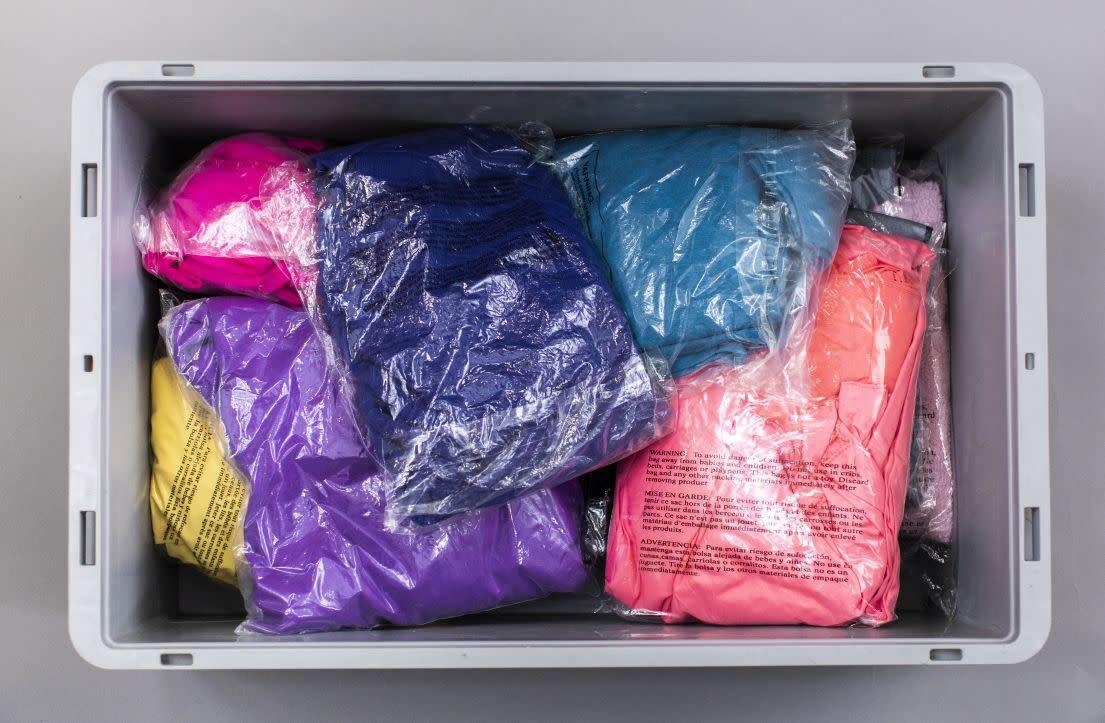
Mixed packaging
As common as polybagging is, apparel comes in a wide variety of packaging. This variety is challenging because the robot must again quickly adapt its approach to the differing textures, surfaces, and weights that different packaging presents. Even more challenging is when an item has a mixture of materials. Socks, for instance, typically are packaged in a paper band. This means the robot has to decide where it would be best to grip: On the paper packaging or the fabric?
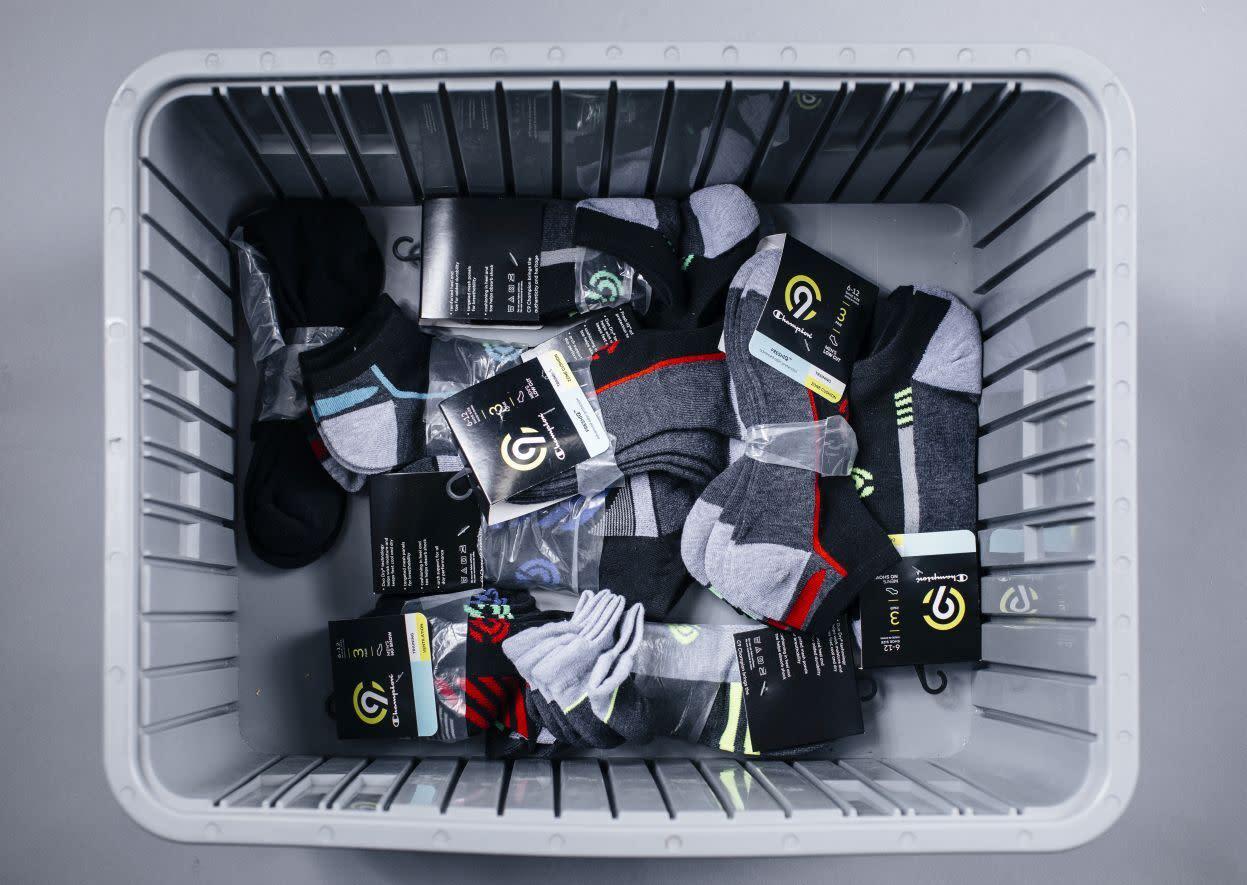
Packing order and density
Sometimes, apparel items are laid neatly in totes. Other times, they’re tossed in haphazardly. Other times still, they’re packed as tightly as sardines. In all situations, the robot needs to be able to visually parse one item from the next, even when they’re overlapping, so that they don’t pick more than one item at once (double picking). That’s a complicated mathematical problem involving depth, edge, shadow, and border detection for traditional machine vision to solve.

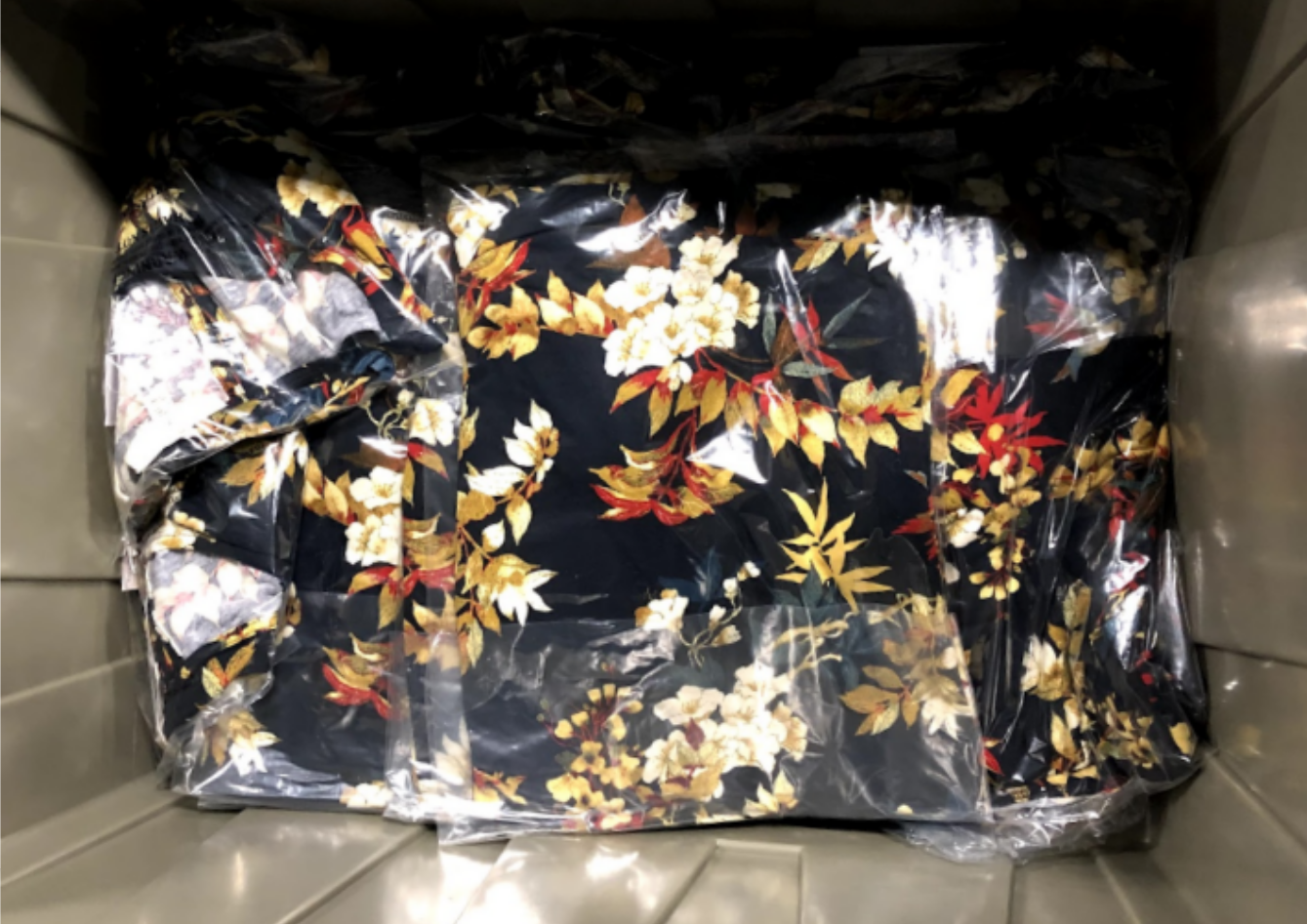
Deformability
Now let’s say that a robot is able to figure out one apparel item from the next, despite the challenging packaging and packing. It approaches the piece of apparel, picks it up perfectly with just the right amount of suction, and…the item deforms — it changes shape from a pretty flat rectangular object to one that is folded over after getting picked up. After all, it’s a shirt. That’s what they do when you pick them up. Well, now we’ve changed the physics involved in handling this object. A robot needs to understand how this deformation affects its grip, movements, speed, etc. This cannot be easily modeled mathematically for traditional robotics.
Frequent SKU turnover
Between fast fashion, sales, and holidays, apparel retailers roll out new SKUs like they’re going out of style (literally). Many apparel retailers turnover close to over 80% of their SKUs at least once a year! Just as a robot has become competent at picking one set of SKUs, a new set rolls in. With traditional robotics (remember - billions of permutations ), reprogramming them to handle such SKU changes could be prohibitively expensive and time-consuming.
Addressing Apparel-Picking Challenges with AI Robotics
There are no two ways about it: apparel is hard to grasp and pick. Deformability makes it difficult to transport apparel items to their destination and to lay them flat and centered into totes or onto moving belts. Overlapping items make double picks a frequent problem. And figuring out the right grasp is a constant challenge – for traditional robots. For AI-powered robots, however, it’s a different story altogether.

